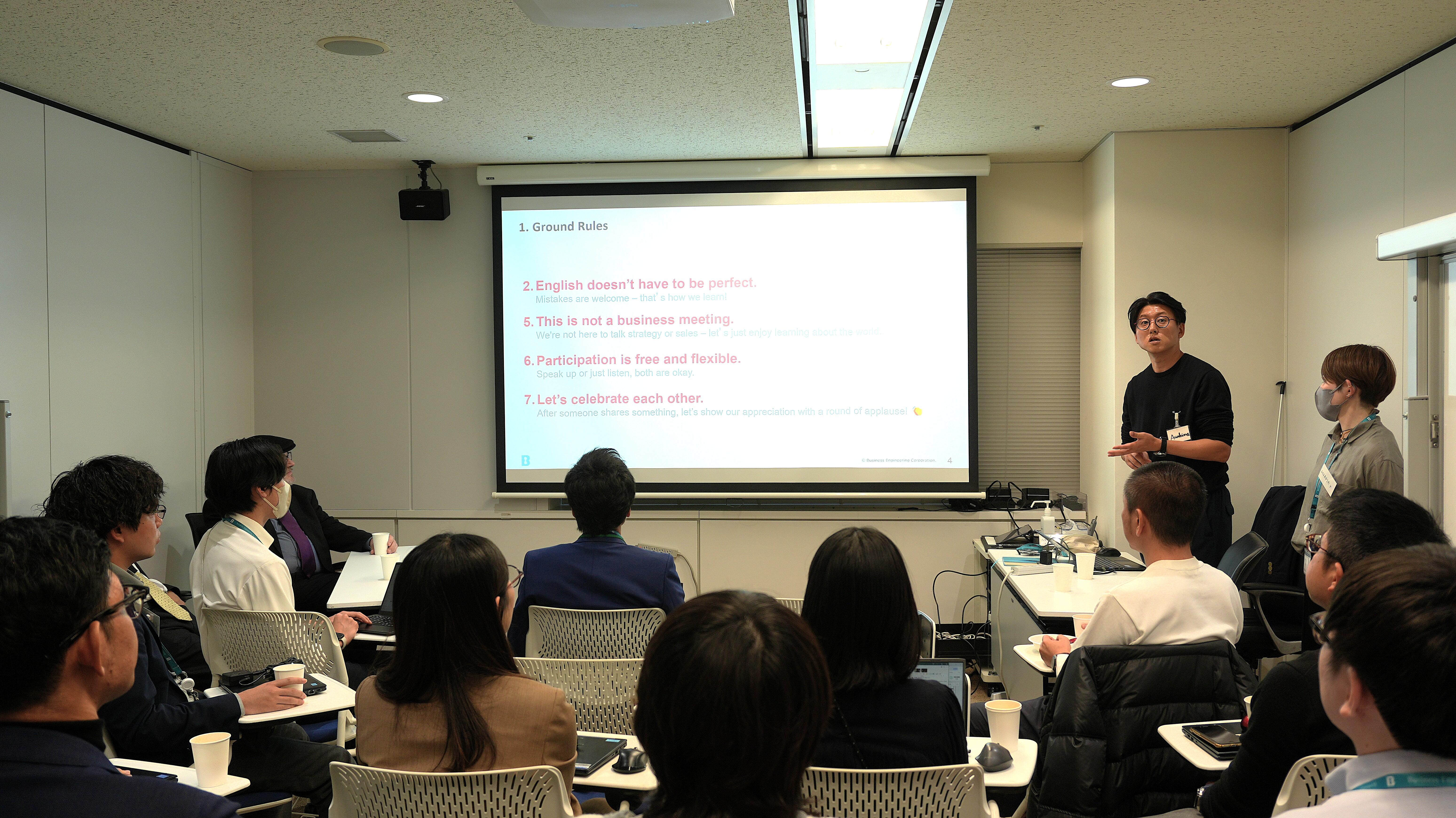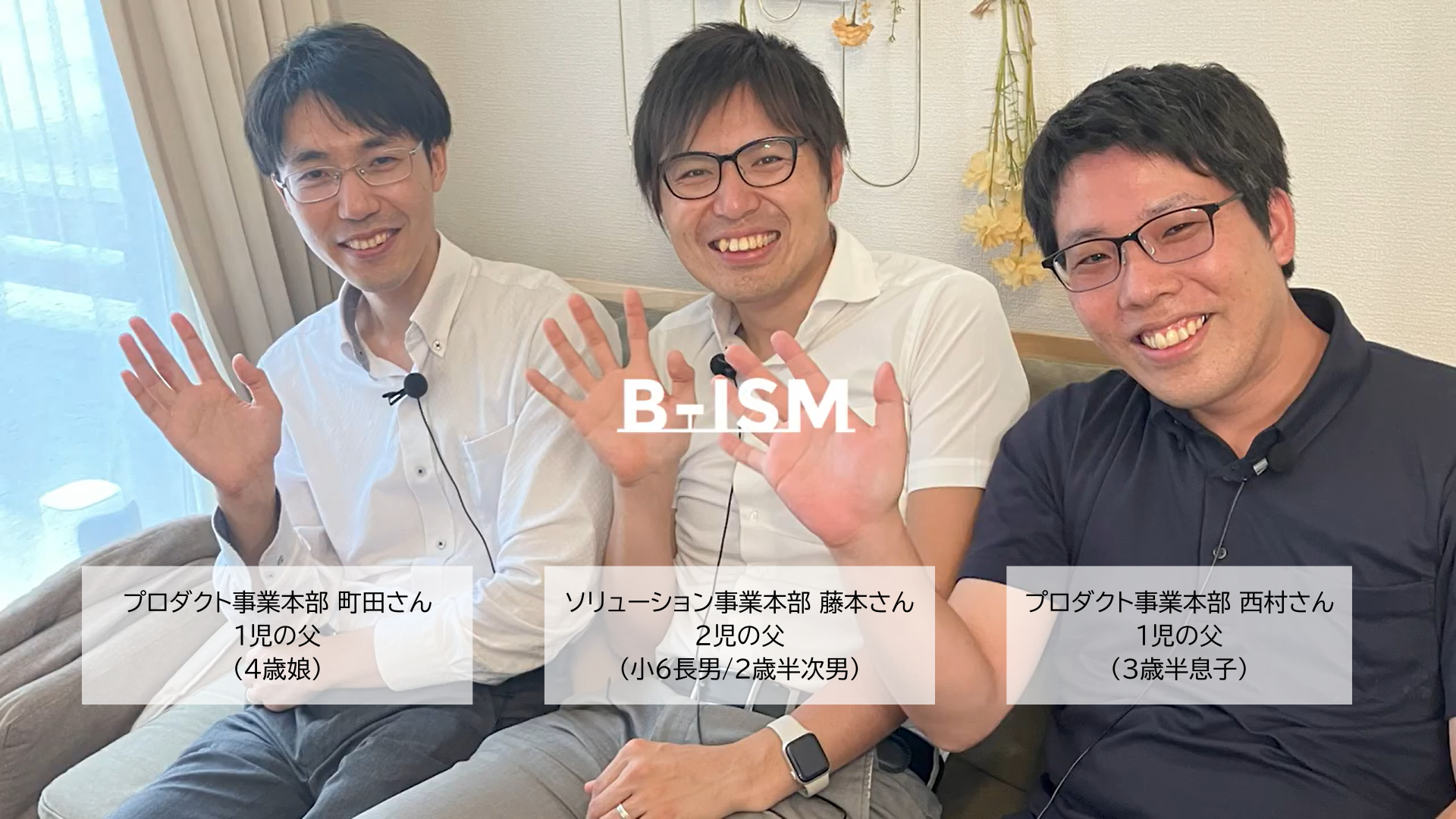Speaker: Business Engineering Corporation
Product Business Headquarters
Product Service Headquarters
System Integration Division 3
Project Manager/Product Consultant
Takumi Abiko
To meet customer needs and provide sustainable products
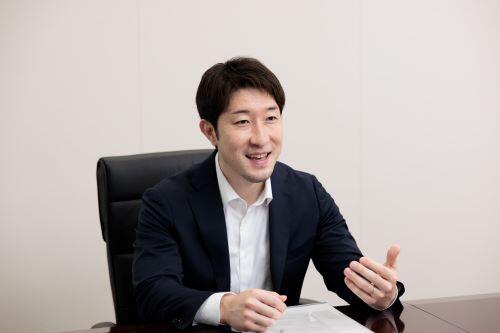
"mcframe GA," a global management infrastructure system that supports the overseas business expansion of Japanese companies, is constantly evolving by implementing new standard functions based on knowledge and ideas acquired from implementation projects being promoted around the world, opinions received from customers, and solutions to problems. Takumi Abiko, who plays a central role as a member of the New Function Selection Committee (※), always places emphasis on providing sustainable products that meet market needs, and works to strengthen the product with a strong sense of mission in creating value for mcframe GA.
*mcframe GA's product development process maintains a competitive advantage through a method similar to the "stage-gate method."
Mission as a New Feature Selection Committee Member
"mcframe GA" is an accounting/ERP cloud system that supports the global business of Japanese companies. Digging deeper into what makes it so strong, we arrive at the fact that it is a product developed by Business Engineering (B-EN-G) itself. New implementation projects being promoted around the world, requests from existing customers, and system requirements that anticipate future customer issues are collected into a backlog (VOC LIST) as product development themes, and high-priority development themes from the VOC LIST are implemented as new standard functions in the next version, resulting in a product that continues to meet user needs to the greatest extent possible.
In the product development process of mcframe GA, a "New Feature Selection Committee" has been established to determine the development targets for the next version from the VOC LIST. The New Feature Selection Committee not only sets the development targets, but also determines the extent of the impact on existing functions as a QCD risk countermeasure, incorporates them into system functions, and acts as a bridge between the product development team and the project promotion team.
Takumi Abiko of the System Integration 3 Division, Product Services Headquarters, Product Business Headquarters, is also a member of the New Feature Selection Committee. After graduating from a university in the US, he joined B-EN-G in 2008. Since then, he has been mainly in charge of implementing and maintaining the accounting area of SAP ERP for five years. After that, he took advantage of the global sensibility and language skills he honed in the US to participate in the implementation project for the company's own product, mcframe GA, and continued to accumulate experience.
Abiko describes his mission as a member of the New Feature Selection Committee as follows: "The New Feature Selection Committee receives ideas and requests for new features from the many consultants involved in a wide range of implementation projects. However, naturally, we cannot incorporate all of them. This is because, as a package solution, the functions must be versatile. Even if something is based on outstanding ingenuity that has contributed greatly to solving the customer's problems, if something too unique is incorporated as a standard function, the consistency of the package solution concept will be lost. For this reason, we rigorously examine the new standard functions to be implemented from multiple perspectives and take into account the resources of the product development team."
The key to success is to give all parties involved a sense of security
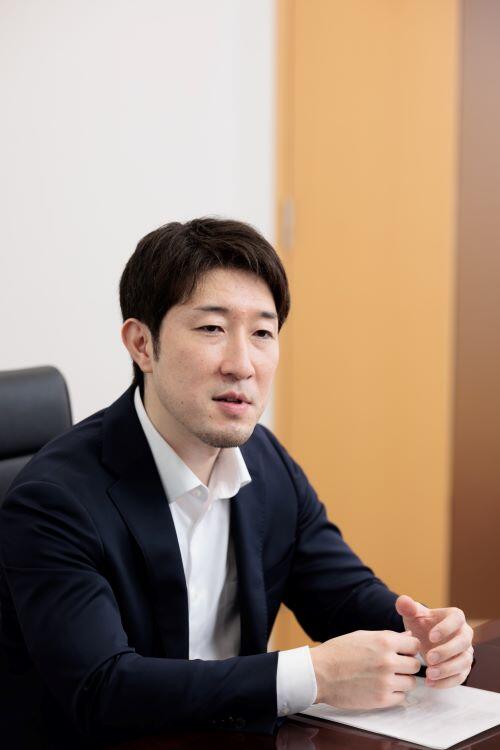
Let's look at how Abiko has honed his skills and sense as a member of the New Feature Selection Committee by looking at his track record as a consultant. Abiko himself cites the implementation project for an electronics trading company affiliated with a major electronics manufacturer, which he was involved in in 2013 when mcframe GA was still called "ASIAGP," as "one of the most difficult and memorable projects."
By unifying the accounting packages that had been implemented separately at bases in eight overseas countries, the aim was to resolve issues such as "the Japanese headquarters being unable to check financial accounting information in a timely manner" and "delays in understanding credit status." Abiko was put in charge of the implementation at the German base.
However, the accounting package that the German base had originally implemented was by no means inferior in functionality. In fact, it was a product that had been widely adopted by accounting firms and had an established reputation, so it was not easy to overturn this.
So Abiko not only visited the work site in Germany, but also partner accounting firms and auditing corporations to give presentations and demonstrations of mcframe GA, and "patiently explained that even if the accounting package changed, there would be absolutely no disruption to business operations." Here again, Abiko's language skills and sensitivity to the international community that he had developed during his experience studying abroad in the United States came in handy.
By building this foundation and gaining understanding for the global integration of accounting packages, it was possible to standardize financial accounting operations. "We can now view data from the German base instantly from the headquarters, on an accounting entry basis. By linking accounts receivable and accounts payable, we can check credit status in a timely manner. Also, when a more detailed understanding of the situation is required, we can talk while sharing the same screen between Japan and the local office, which has reduced the burden of communication," says Abiko, pointing out the results achieved in the implementation project.
As a result, this track record became a stepping stone for the full-scale rollout of mcframe GA in Europe. "If I had to name a factor in its success, it was that the staff and related parties at the base felt a sense of security," Abiko recalls, adding, "This project made us realize the importance of providing standard functions with a high level of flexibility and versatility that can respond to the diverse values and business needs that differ from country to country and region to region."
Taking an aggressive approach to improve the functionality of the package
What solidified Abiko's foothold as a member of the New Function Selection Committee was an implementation project for a major technology trading company related to industrial electronics and mechatronics that he has been involved in since 2019. The project involved the introduction of mcframe GA to overseas bases, and Abiko was in charge of the implementation at one of those bases, the Shanghai base in China, which turned out to be an extremely challenging project.
"mcframe GA's main target is small- to medium-sized overseas subsidiaries, but the client's Shanghai base is a large facility that accounts for the majority of its overseas sales, and mcframe GA's functions alone were not enough to handle the business. They were forced to develop a large number of add-on programs, which created a big gap with the basic concept of 'standardizing business operations based on packages'," says Abiko.
However, even amidst all of this, Abiko had a strong desire to "not develop an add-on just to escape. Even if we did develop an add-on, I wanted it to be an offensive move that would lead to future functional improvements and evolution of the package," he said.
Abiko worked closely with the product development team to deepen his understanding of the design philosophy, development management, and roadmap, and worked to develop various add-ons. As a result, the accounting package was integrated without deviating from the goal of standardizing operations at the Shanghai base.
Specifically, what kind of offensive moves did Abiko take?
One of these was the improvement of the UI (user interface). During the research phase, the local staff at the Shanghai base expressed great dissatisfaction with the UI at that time, saying, "This makes it impossible to carry out our work." To solve this problem, the UI would have to be customized, but Abiko did not do so. Abiko, who was familiar with the roadmap for mcframe GA, decided to apply the new UI that was scheduled to be installed in the next version for the first time in an mcframe GA project. "This resolved many of the complaints about the system's operability, and we received feedback from customers such as, 'This is usable,' and we were able to see the prospect of actual operation. Regarding other missing functions that were pointed out, we showed them the outlook for their implementation in the new version, and we drew up a schedule based on that assumption," says Abiko. Abiko also focused on reflecting as many of the solutions to the various issues derived from this implementation project in mcframe GA as possible. For example, the strengthening of the unit price management function that was to be used at the Shanghai base.
"Even with local package systems or well-known overseas systems, it is often not possible to manage unit prices as customers require. For this reason, we have seen many customers managing unit prices outside the system and entering them each time. mcframe GA originally had a unit price management function, but by making it possible to register unit prices that are more detailed according to conditions than before, many customers will be able to enjoy the benefits. We strongly urged the product development team that 'this will definitely be useful as a standard function in the future,'" says Abiko.
In fact, this logic has been implemented into mcframe GA as a best practice, helping to solve problems for many companies.
It is important to have "obvious standards" for business standardization
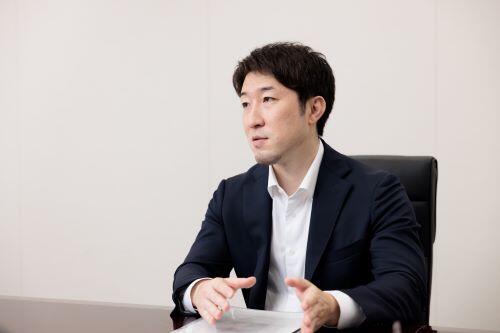
As can be seen from the above efforts, mcframe GA is continuously evolving by connecting the many implementation projects being carried out around the world in a single line. The New Feature Selection Committee is truly the bridge between these two projects.
"It is important to always try to get to know the customer, dig deep into the background of the questions asked, and answer the customer's true intentions from a business perspective rather than simply giving a system-based answer to their requests. Also, the goal of the project is not to complete the package implementation, but to ensure that the customer is satisfied with the value of mcframe GA after it goes live and can continue to use it. We must not forget this when defining requirements and designing.
"It's important to always look back at the customer's purpose for introducing the system, and to keep an eye on things like whether the work flow is reasonable, and whether the design documents and manuals have been prepared so that the maintenance team won't have any problems later," Abiko said, reaffirming his sense of mission. Furthermore, Abiko recognized that a major purpose of companies introducing packages is to standardize their work, and said, "It's important to have high 'obvious standards' that can meet this," as he looked ahead to future product enhancements.


